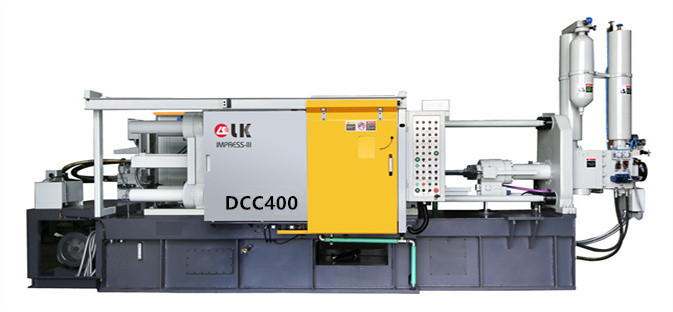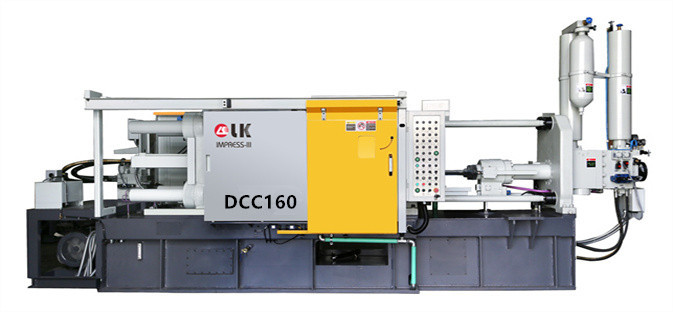How to Choose a Die-Casting Machine?
LK Die Casting Machine / 2024-07-16 15:05:11
Choosing a suitable die-casting machine is crucial for enterprises to improve production efficiency, reduce costs, and ensure product quality.
The selection of die-casting machines involves many aspects, including equipment type, specifications, performance, cost, and supplier services.
This article will introduce the key factors in choosing a die-casting machine in detail to help enterprises make wise decisions.

1. Understand the types of die-casting machines
Die-casting machines are mainly divided into two types: hot chamber die-casting machines and cold chamber die-casting machines.
Understanding the characteristics and application scope of these two types is the first step in choosing the right equipment.
1.1 Hot chamber die-casting machine
Features: The die-casting chamber is directly immersed in the molten metal, suitable for low melting point metals (such as zinc, magnesium, and tin alloys).
Advantages: high efficiency, low energy consumption, and simple operation.
Disadvantages: Unable to handle high melting point metals and limited material selection.
Scope of application: small and complex parts, such as electronic components, toys, automotive parts, etc.
1.2 Cold chamber die-casting machine
Features: The die-casting chamber is separated from the furnace, suitable for high melting point metals (such as aluminum, copper, and magnesium alloys).
Advantages: Suitable for high melting point metals, high strength castings, and strong flexibility.
Disadvantages: Low production efficiency, high energy consumption, complex operation.
Scope of application: Medium and large castings, such as automobile engine cylinders, gearbox housings, electronic equipment housings, etc.
2. Determine production needs
The key to selecting a die-casting machine is to clarify specific production needs, including output, part size and complexity, material type, etc.
2.1 Production batch
Large-scale production: Choose high-efficiency equipment, such as hot chamber die-casting machines.
Small-scale production: Choose equipment with high flexibility, such as cold chamber die-casting machines.
2.2 Part size and complexity
Small and complex parts: Hot chamber die-casting machines are ideal.
Large and complex parts: Cold chamber die-casting machines are more suitable.

2.3 Material type
Low melting point metals: such as zinc and magnesium, choose hot chamber die casting machines.
High melting point metals: such as aluminum and copper, choose cold chamber die casting machines.
3. Consider equipment specifications
Equipment specifications include parameters such as the tonnage, clamping force, injection speed, and injection force of the die-casting machine. These
specifications directly affect the performance and suitability of the die-casting machine.
3.1 Tonnage
The tonnage of the die-casting machine determines the size and weight of the castings it can handle. Choose the right tonnage equipment to ensure that it can meet
production needs while avoiding overinvestment.
3.2 Clamping force
The clamping force is the force that the die-casting machine uses to keep the mold closed during the injection process. Insufficient clamping force can cause
casting quality problems.
When selecting, ensure that the clamping force meets the requirements of the casting.
3.3 Injection speed and injection force
The injection speed and injection force affect the filling effect of the molten metal and the quality of the casting. High injection speed and injection force help
produce high-quality complex castings, but they need to be selected according to specific needs.
3. Evaluate equipment performance
The performance of the die-casting machine is an important consideration in the selection, including accuracy, stability, energy consumption, degree of
automation, etc.
4.1 Accuracy and stability
High-precision and high-stability die-casting machines can ensure the consistency and quality of castings and reduce the defective rate.
4.2 Energy consumption
Energy consumption directly affects production costs. Choosing equipment with high energy efficiency can help reduce operating costs.
4.3 Automation
Die-casting machines with high automation can improve production efficiency, and reduce labor costs and operating risks. Choose appropriate automation equipment
according to the production scale and process complexity of the enterprise.
5. Consider cost
Cost is an important factor in choosing a die-casting machine, including equipment purchase cost, operation cost, maintenance cost, etc.
5.1 Equipment purchase cost
Choose a cost-effective die-casting machine according to the enterprise budget to balance initial investment and long-term benefits.
5.2 Operating cost
Including energy consumption, labor costs, etc. Choosing equipment with high energy efficiency and easy operation can help reduce operating costs.
5.3 Maintenance cost
The maintenance and repair costs of die-casting equipment are also part of the long-term cost. Choose equipment with easy maintenance and good durability to reduce
downtime and repair costs.
6. Choose a reliable supplier
Choose a reliable die-casting machine supplier to ensure equipment quality and after-sales service. Investigate the supplier's qualifications, technical support,
after-sales service, etc.
6.1 Supplier Qualification
Choose suppliers with good reputations and qualifications to ensure equipment quality and service.
6.2 Technical Support
High-quality technical support can help enterprises quickly solve equipment problems and improve production efficiency.
6.3 After-sales Service
Perfect after-sales service can ensure the long-term stable operation of equipment, and reduce downtime and maintenance costs.
7. Field investigation and trial
Before finalizing the purchase, conduct field investigation, and equipment trial to ensure that the die-casting machine meets production needs and performance
requirements.
7.1 Field investigation
Visit the supplier's production workshop and display equipment to understand the manufacturing process and quality of the equipment.
7.2 Equipment trial
Trial the equipment, evaluate its performance, ease of operation and production efficiency, and ensure the selection of the right die-casting machine.
Conclusion
Choosing the right die-casting machine is the key for enterprises to improve production efficiency, reduce costs, and ensure product quality.
By understanding the types of die-casting machines, determining production needs, considering equipment specifications and performance, evaluating costs, selecting
reliable suppliers, and conducting field investigations and trials, enterprises can make wise decisions and choose the most suitable die-casting machine equipment.
Enterprises should consider various factors comprehensively according to their own production needs and budgets, so as to choose the most suitable die-casting
machine equipment, improve production efficiency, reduce operating costs, improve product quality, and enhance market competitiveness.
For more info, you can refer to: https://www.youtube.com/shorts/JLX410QV_kw
Contact LK Egypt to learn more info about the die-casting machine
LKAGENT OFFICE DCM
Address: Industry Zone, South of Port Said Kebly, Egypt
https://www.zazdiecasting.com/
Phone/WhatsApp/Wechat: +86 13598704163
Mobile: +20 101 304 3317 +20 150 181 8310
Email: jack@zazmae.com ahmedmahmoud@zazmae.com
#die cast tooling
#trivalent chromate
#rapid prototype casting
#a360 aluminum
#aluminum caster
#aluminum prototype
#ideal 55 slider parts
#density of aluminum kg/mm3
#magnesium sheet metal
#parts of a metal gate
#subcontracting of screw machining for the luxury sector
#wall aluminum
#die casting tooling
#tooling for die casting
#density of aluminium in kg mm3
#clear chromate
#es casting metals
#gating material
#prototype aluminum
#sigma castings
#subcontracting of screw-machining for household appliances
#we squeeze to please machine
#aluminium gravity die casting
#aluminum part
#aluminum rapid prototyping
#nickel casting
#plunger tip for die casting machine
#rapid prototyping aluminium
OTHER CONTENT
-

2024-09-19 14:16:15 LK Cold Chamber Die Casting Machine DCC900 Locking Force: 9000KN Die Height: 400-1000mm Space Between Tie Bars: 930x930mm Shot Weight: 13.5Kg Casting Area Max:2250c㎡
More -

2024-09-19 14:11:06 LK Cold Chamber Die Casting Machine DCC280 Locking Force: 2800KN Die Height: 250-650mm Space Between Tie Bars: 560x560mm Shot Weight: 2.9Kg Casting Area Max:700c㎡
More -

2024-09-19 10:23:07 LK Cold Chamber Die Casting Machine DCC580 Locking Force: 5000KN Die Heigh: 350-850mm Space Between Tie Bars: 760x760mm Shot Weight: 6.9Kg Casting Area Max:1250c㎡
More -

2024-09-19 10:11:20 LK Cold Chamber Die Casting Machine DCC400 Locking Force: 4000KN Die Height: 300-700mm Space Between Tie Bars: 669x669mm Shot Weight: 4.7Kg Casting Area Max:1000c㎡
More

